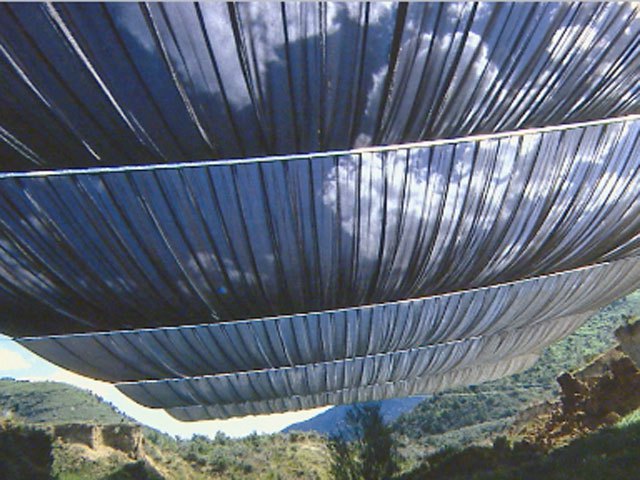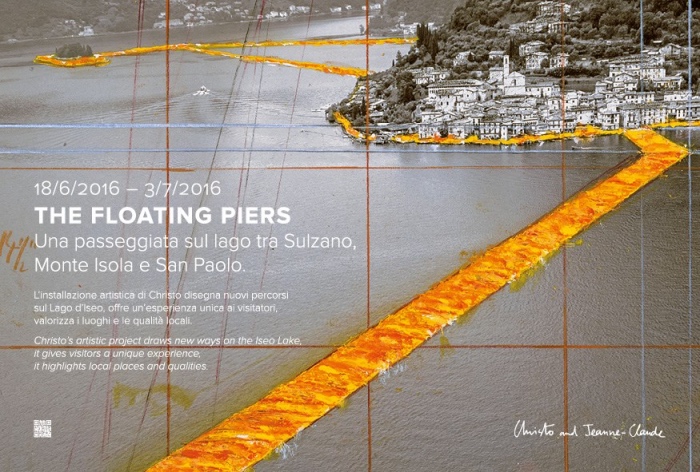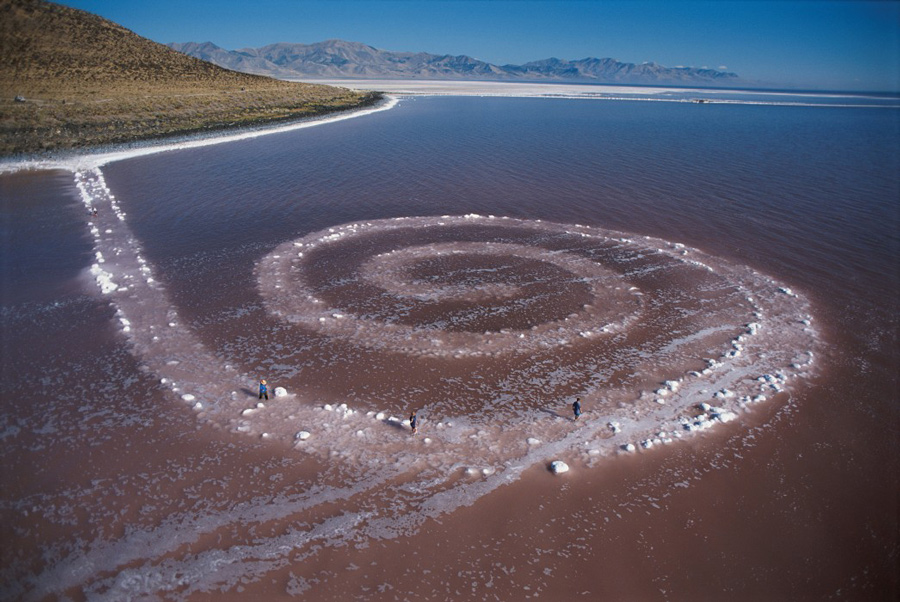
Have you ever thought about the relationship between art and the natural environment? In the world of contemporary art, a unique and fascinating movement has emerged strongly: Land Art.
This artistic movement, which emerged in the late 1960s, revolutionised the way art interacts with the natural landscape.
In this post I want to tell you what Land Art is and what is the relationship between Art and the Environment
What is Land Art

Christo, Lago d’Iseo
Far from being a simple artistic expression, Land Art invites people to rediscover and reconnect with their environment. Through the works of some famous artists, such as Christo and Robert Smithson, Land Art transformed natural and urban landscapes into incredible works of art, moving art out of museums and galleries.
THE BIRTH OF LAND ART
Land Art, a term that literally means ‘art of the land’, represents the intervention of artists in the natural environment, often on a large scale. This art form does not pursue an aesthetic goal, but rather seeks to stimulate an awareness of man’s ability to interact with his surroundings.
Land Art artists have left indelible marks on the land, creating permanent or temporary installations that, thanks to photography and video, are enjoyed by the public even when the work is dismantled.
LAND ART AND ITS IMPACT ON THE ENVIRONMENT
Robert Smithson, one of the pioneers of Land Art, created a giant spiral, known as the Spiral Jetty, in the waters of the Great Salt Lake, using tons of boulders, bulldozers and trucks to shape his artistic vision.
Christo and his wife Jean Claude, other leading artists of the movement, spread a massive orange cloth in a valley in Colorado, wrapped the Reichstag building in Berlin and created a floating walkway on Lake Iseo, transforming the environment into a temporary work of art.
Land Art thus transcends the physical boundaries of museum galleries and extends into both the urban and natural environment. The landscape becomes an active element in artistic creation, losing its passive role as a simple object of representation.
Artists, often inspired by their chosen site, sometimes create important works in remote and inaccessible places, making their fruition possible only through photographic documentation or film footage. Other times they transform the landscape of large cities for a limited time, thus entrusting photography and video with the task of perpetuating the memory of the artistic intervention realised.
LAND ART AS A CONNECTION BETWEEN MAN AND NATURE
The aim of Land Art is to re-establish a deep connection between man and the environment through gestures that are both ephemeral and consciously reversible. These works manifest themselves in various forms, from the minimal alteration of nature, with simple paths traced by foot, to the creation of temporary sculptures made of natural materials.
Some works even aim to emulate the grandeur of natural spectacles, such as the power of atmospheric events.

Spiral Jetty
Land Art is a fascinating example of how art can dialogue with the environment, inviting both artists and viewers to reflect on their relationship with the natural world. Through both its ephemeral and permanent presence, this art form continues to stimulate debates and inspire new generations of art-loving artists.

